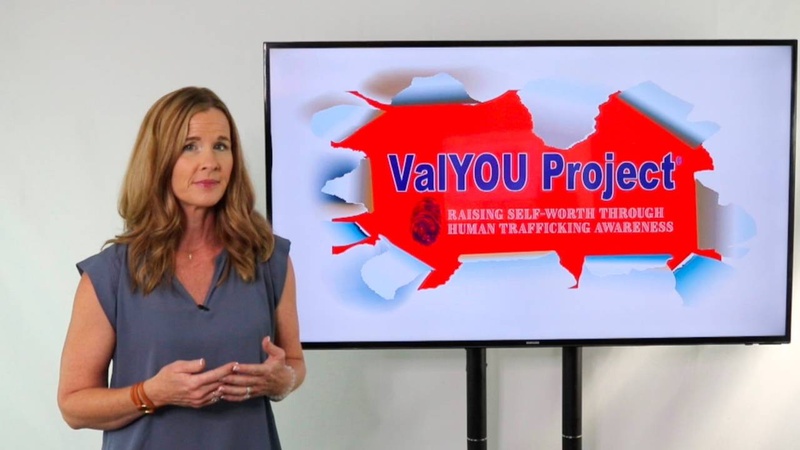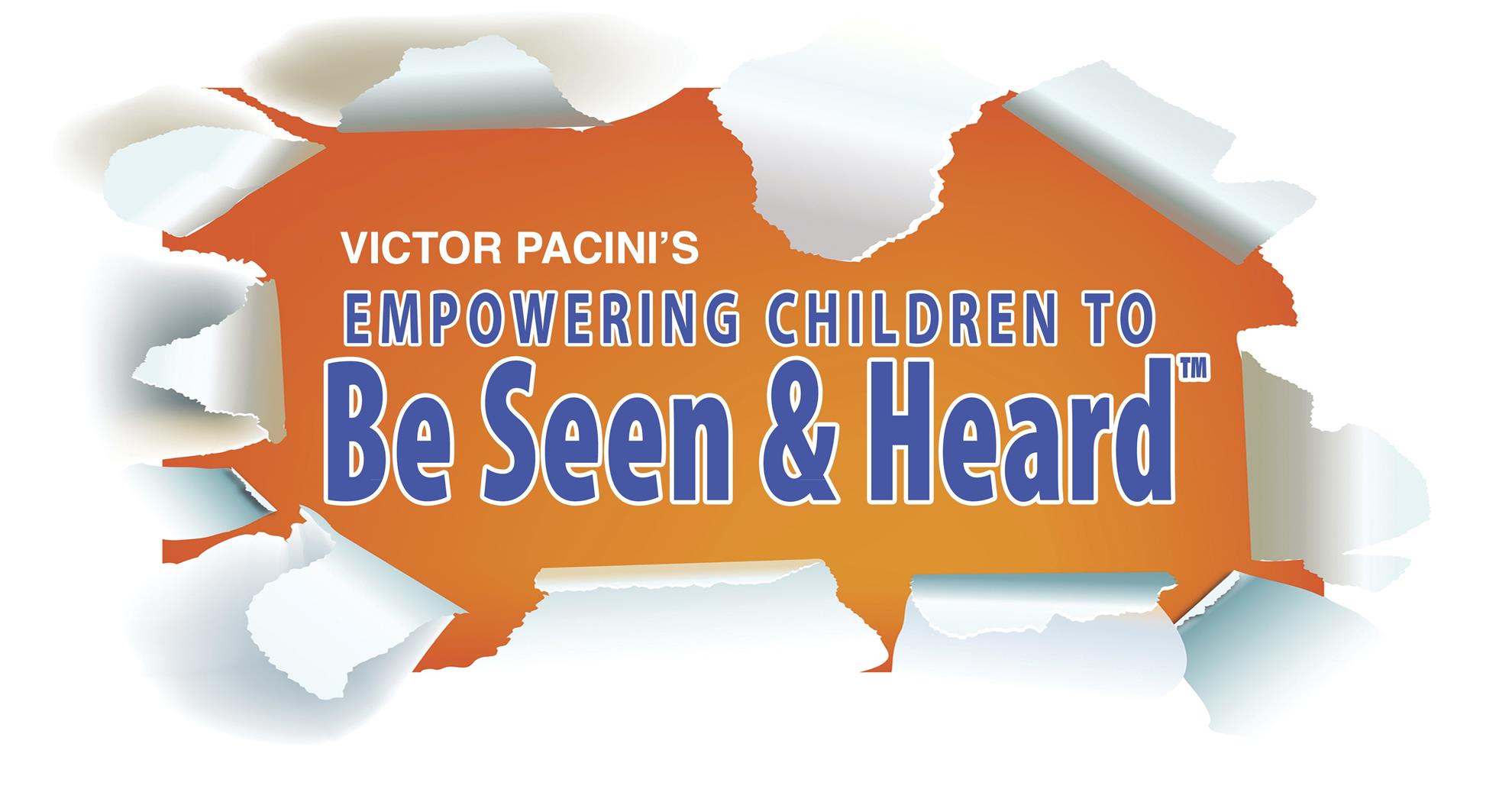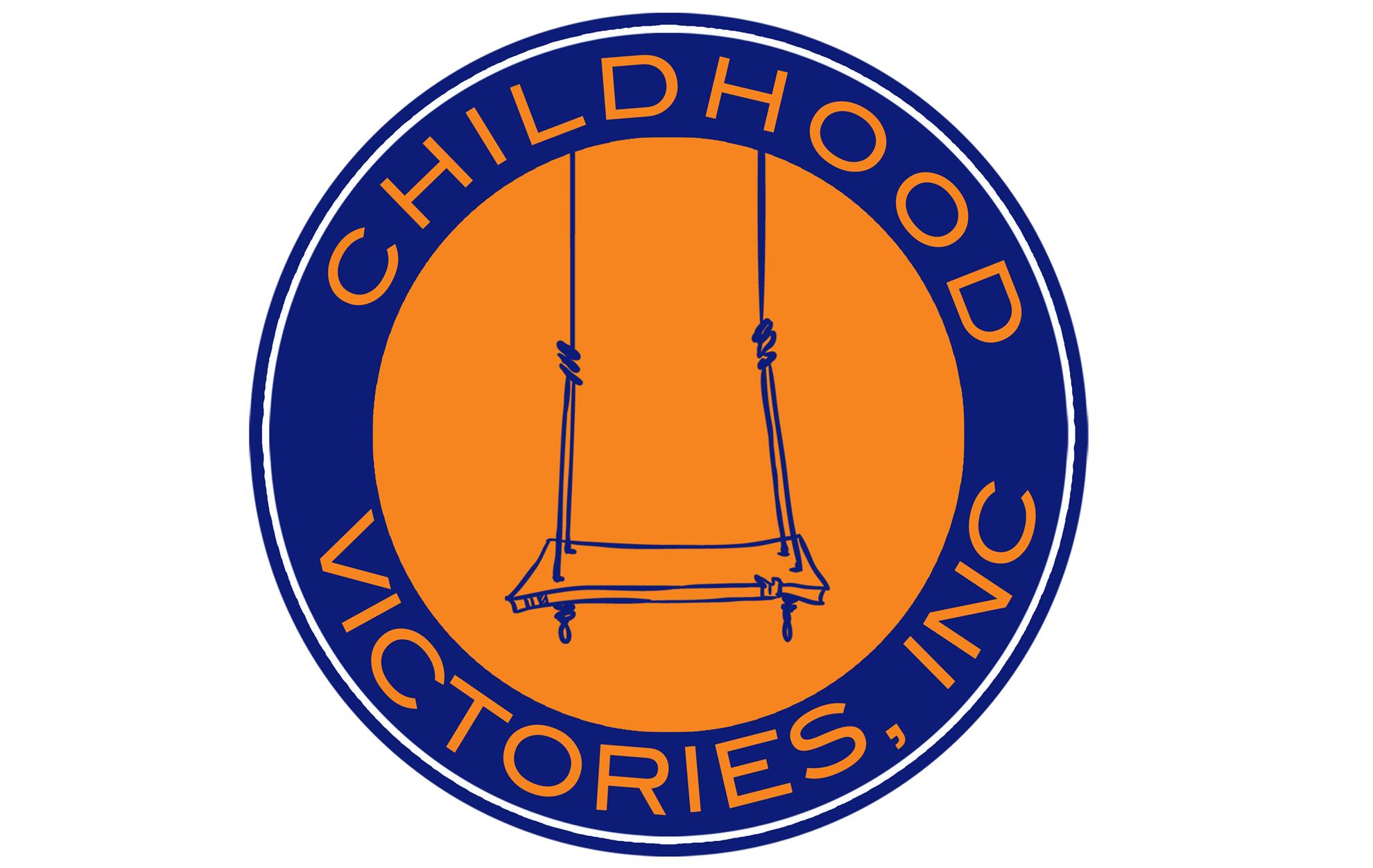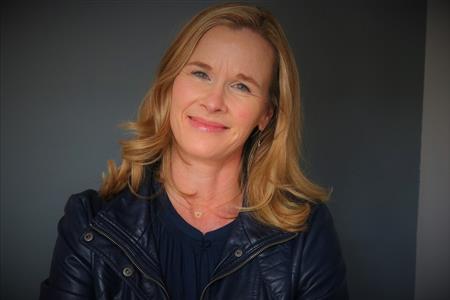With trauma at unprecedented levels, it's time for everyone-from school administrators to government officials-steps up efforts to dismantle the child sexual abuse and exploitation epidemic!
 One of the highest forms of love is service. A form of service is protection. Without feelings of safety and security, a child cannot thrive. We have a void in our education system which leaves students vulnerable, and there is a sector of society that profits from this gap. Abuse prevention education is not a nice-to-have addition to a learning environment— it is vital. Lack of prevention contributes to students’ failure to thrive. What is behind failing students? Trauma. Without addressing it and creating barriers to preventable traumas, we will continue to be reactive. We must transform this response. We can—and we are
One of the highest forms of love is service. A form of service is protection. Without feelings of safety and security, a child cannot thrive. We have a void in our education system which leaves students vulnerable, and there is a sector of society that profits from this gap. Abuse prevention education is not a nice-to-have addition to a learning environment— it is vital. Lack of prevention contributes to students’ failure to thrive. What is behind failing students? Trauma. Without addressing it and creating barriers to preventable traumas, we will continue to be reactive. We must transform this response. We can—and we areNevertheless, when it comes to educating children about sexual and physical abuse, sexual and physical assault, exploitation, and human trafficking prevention, more needs to be done. The failure to do so has severe consequences. According to a Georgia State University study, the effects of child sexual abuse include increased risk for severe mental, physical, and behavioral health disorders, sexually transmitted diseases, self-inflicted injury, substance abuse and violence, and subsequent victimization and criminal offending.
The Cost of Child Sexual Abuse: One in 4 girls and 1 in 6 boys will experience a form of sexual abuse prior to age 18, of which 90% is committed by someone they know. One-third of these occur in the home. This is not just a Catholic Church or a Boy Scouts of America problem—it’s an epidemic that does not discriminate. According to the National Center for Biotechnology Information, the estimated cost of US childhood sexual abuse is $9.3 billion per year. However, take into account that child sexual abuse is under-reported, and that figure is likely much higher. More significantly, child sexual abuse can change the trajectory of a child’s life. Research conducted by the Centers for Disease Control and Prevention and Kaiser Permanente, as part of the Adverse Childhood Experiences (ACEs) study, on the effects of toxic stress on DNA function indicates that such traumatic events extend to future generations. Child sexual abuse in the United States is costly, with an average lifetime cost of $1.1 million per death of female victims and $1.5 million per death of male victims, according to a 2019 study by Georgia State University. As the nation rolls out COVID-19 vaccines, there is another “vaccine” available to address the epidemic of childhood sexual and physical abuse: primary prevention education. We only need to put it to use. The aftermath of child sexual abuse is far worse than any pandemic. It kills from the inside out, oftentimes invisibly and silently. Educators are the No. 1 reporters of child maltreatment, which includes neglect, and emotional, physical, and sexual abuse. Being without a safe space— school—has detrimental and, for some, life-threatening consequences. During the stay-at-home period, many children were without their safe space. As a result, in the coming school year, it is likely that students will require increased mental health care needs. Making real and tangible plans for infusing prevention education and fostering open and supportive dialogues for students in the coming school year is critical. Erin’s Law While solutions to child maltreatment, such as Erin’s Law, are spreading, they need to be fully embraced for maximum impact. Erin’s Law, the namesake of child sexual abuse survivor Erin Merryn, requires public schools to implement a prevention-oriented child sexual abuse program. It teaches age appropriate techniques to recognize child sexual abuse and suggests ways children can confide in a trusted adult to report abuse. Currently, 37 states have adopted Erin’s Law. Ask school leaders and school board members how they are actively working to support it. It is not enough to check a box that states health teachers are delivering a line about good touch and bad touch. For children, such statements are confusing and almost never helpful. In states without Erin’s Law—and even in states that have passed the law— the implementation of prevention education often is spearheaded by someone who has been impacted by abuse or who has a deep understanding of its traumatic consequences. For the law to be effective, there must be uniform follow-through. Systemic and societal shifts need to occur to normalize the topic of discussing healthy boundaries and body safety. Not talking about the issue fosters a ripe breeding ground for abuse. The effects of sexual abuse are not only costly in terms of dollars but also in terms of overall physical and mental health. The impact ranges from depression and anxiety to unplanned pregnancies, poor academic performance, addiction, and high-risk behaviors, including suicide. This epidemic spills into many sectors of society, including increasing opioid demand and fueling the human trafficking pipeline. The majority of human trafficking victims experience a form of sexual abuse in their youth. Vulnerabilities, such as physical, sexual, or emotional abuse, increase susceptibility to being exploited and/or trafficked. Other vulnerabilities which increase the likelihood of someone being trafficked include food and housing insecurities, and lack of support. However, topping the list is the absence of unconditional love. There does not need to be a complicated approach to filling this void. Start the conversation and check in with students, especially those in vulnerable situations, and work collectively to fulfill their unmet needs. For students to have mentors, supportive role models and involvement in a sport or club are key. Keep them busy and fill their need to be seen, heard, valued, and loved.
Prevention: Small Investment = Immeasurable Returns Collectively, we can work to be part of the solution. Parents can use their voices to ask for body safety and prevention education within their child’s school. Education that empowers students to use their voice when experiencing an unsafe touch fills a tremendous gap in the education system and ignites a much-needed systemic change. It’s simple: We must represent those roughly five kids per classroom who are currently being victimized. Doing nothing is negligent. With the help of compassionate, trauma informed leaders, the prevention education shift can be set into motion. Victor Pacini, creator of Childhood  Victories, Inc., is helping to ignite this movement. Pacini was abused by a family friend and grew up with a violent alcoholic father, whose philosophy, according to Pacini, was, “Children should be seen and not heard.” After experiencing sexual abuse and being threatened not to tell anyone, and with that motto top of Pacini’s mind, the secret was safe. But Pacini’s mental and physical health suffered, until he found the courage to tell his sister during his freshman year in college. Telling was the first step toward healing, Pacini, whose life mission is for every child to be seen and heard, actively works to empower students with tools to prevent sexual and physical abuse. As an author and public speaker, he created an empowering curriculum for students with a simple, yet profound message: “Don’t keep a secret like I did. If you have experienced an unsafe touch, talk to your trusted hero.” Since in-person presentations were not feasible during the past school year, Childhood Victories used live-stream Zoom presentations and online video modules to keep the initiative moving forward during the pandemic. In each presentation, students are empowered with life-changing skills to recognize, stop, and prevent sexual and physical abuse—the ultimate form of bullying. “I don’t care which programs educators use to address body safety, just do something. Start the conversation,” Pacini says. “When students connect to my story, they do disclose abuse within the live-stream chat box during the presentations. This saddens me, because I can empathize with how they feel. However, it also propels us to spread this empowering message—we are changing the trajectory of students’ lives.” Pacini adds that there have been more than 300 disclosures since he began presenting the Be Seen and Heard curriculum in 2014. It’s life-changing work via a simple safety message. This type of primary prevention education gives kids, parents, and educators a new language of safety and boundaries, empowering them to be strong and in
Victories, Inc., is helping to ignite this movement. Pacini was abused by a family friend and grew up with a violent alcoholic father, whose philosophy, according to Pacini, was, “Children should be seen and not heard.” After experiencing sexual abuse and being threatened not to tell anyone, and with that motto top of Pacini’s mind, the secret was safe. But Pacini’s mental and physical health suffered, until he found the courage to tell his sister during his freshman year in college. Telling was the first step toward healing, Pacini, whose life mission is for every child to be seen and heard, actively works to empower students with tools to prevent sexual and physical abuse. As an author and public speaker, he created an empowering curriculum for students with a simple, yet profound message: “Don’t keep a secret like I did. If you have experienced an unsafe touch, talk to your trusted hero.” Since in-person presentations were not feasible during the past school year, Childhood Victories used live-stream Zoom presentations and online video modules to keep the initiative moving forward during the pandemic. In each presentation, students are empowered with life-changing skills to recognize, stop, and prevent sexual and physical abuse—the ultimate form of bullying. “I don’t care which programs educators use to address body safety, just do something. Start the conversation,” Pacini says. “When students connect to my story, they do disclose abuse within the live-stream chat box during the presentations. This saddens me, because I can empathize with how they feel. However, it also propels us to spread this empowering message—we are changing the trajectory of students’ lives.” Pacini adds that there have been more than 300 disclosures since he began presenting the Be Seen and Heard curriculum in 2014. It’s life-changing work via a simple safety message. This type of primary prevention education gives kids, parents, and educators a new language of safety and boundaries, empowering them to be strong and in  control of their body and feelings. Just as fire, tornado, and active shooter plans are rehearsed in schools, personal safety training needs to be mandated to give children a personal safety plan. Sexual abuse impacts more students than all of those other safety issues combined. As the leaders in reporting child maltreatment, school officials need to be held accountable for administering appropriate curriculum and empowering messaging to help keep students free from unsafe touch and physical abuse. Children need help defining boundaries, and parents want nonthreatening language to address the topic. Prevention education is not a privilege; it’s a right. Every child deserves to be safe. Every child deserves to be seen, heard, and loved in the absence of abuse.
control of their body and feelings. Just as fire, tornado, and active shooter plans are rehearsed in schools, personal safety training needs to be mandated to give children a personal safety plan. Sexual abuse impacts more students than all of those other safety issues combined. As the leaders in reporting child maltreatment, school officials need to be held accountable for administering appropriate curriculum and empowering messaging to help keep students free from unsafe touch and physical abuse. Children need help defining boundaries, and parents want nonthreatening language to address the topic. Prevention education is not a privilege; it’s a right. Every child deserves to be safe. Every child deserves to be seen, heard, and loved in the absence of abuse.
 Victories, Inc., is helping to ignite this movement. Pacini was abused by a family friend and grew up with a violent alcoholic father, whose philosophy, according to Pacini, was, “Children should be seen and not heard.” After experiencing sexual abuse and being threatened not to tell anyone, and with that motto top of Pacini’s mind, the secret was safe. But Pacini’s mental and physical health suffered, until he found the courage to tell his sister during his freshman year in college. Telling was the first step toward healing, Pacini, whose life mission is for every child to be seen and heard, actively works to empower students with tools to prevent sexual and physical abuse. As an author and public speaker, he created an empowering curriculum for students with a simple, yet profound message: “Don’t keep a secret like I did. If you have experienced an unsafe touch, talk to your trusted hero.” Since in-person presentations were not feasible during the past school year, Childhood Victories used live-stream Zoom presentations and online video modules to keep the initiative moving forward during the pandemic. In each presentation, students are empowered with life-changing skills to recognize, stop, and prevent sexual and physical abuse—the ultimate form of bullying. “I don’t care which programs educators use to address body safety, just do something. Start the conversation,” Pacini says. “When students connect to my story, they do disclose abuse within the live-stream chat box during the presentations. This saddens me, because I can empathize with how they feel. However, it also propels us to spread this empowering message—we are changing the trajectory of students’ lives.” Pacini adds that there have been more than 300 disclosures since he began presenting the Be Seen and Heard curriculum in 2014. It’s life-changing work via a simple safety message. This type of primary prevention education gives kids, parents, and educators a new language of safety and boundaries, empowering them to be strong and in
Victories, Inc., is helping to ignite this movement. Pacini was abused by a family friend and grew up with a violent alcoholic father, whose philosophy, according to Pacini, was, “Children should be seen and not heard.” After experiencing sexual abuse and being threatened not to tell anyone, and with that motto top of Pacini’s mind, the secret was safe. But Pacini’s mental and physical health suffered, until he found the courage to tell his sister during his freshman year in college. Telling was the first step toward healing, Pacini, whose life mission is for every child to be seen and heard, actively works to empower students with tools to prevent sexual and physical abuse. As an author and public speaker, he created an empowering curriculum for students with a simple, yet profound message: “Don’t keep a secret like I did. If you have experienced an unsafe touch, talk to your trusted hero.” Since in-person presentations were not feasible during the past school year, Childhood Victories used live-stream Zoom presentations and online video modules to keep the initiative moving forward during the pandemic. In each presentation, students are empowered with life-changing skills to recognize, stop, and prevent sexual and physical abuse—the ultimate form of bullying. “I don’t care which programs educators use to address body safety, just do something. Start the conversation,” Pacini says. “When students connect to my story, they do disclose abuse within the live-stream chat box during the presentations. This saddens me, because I can empathize with how they feel. However, it also propels us to spread this empowering message—we are changing the trajectory of students’ lives.” Pacini adds that there have been more than 300 disclosures since he began presenting the Be Seen and Heard curriculum in 2014. It’s life-changing work via a simple safety message. This type of primary prevention education gives kids, parents, and educators a new language of safety and boundaries, empowering them to be strong and in  control of their body and feelings. Just as fire, tornado, and active shooter plans are rehearsed in schools, personal safety training needs to be mandated to give children a personal safety plan. Sexual abuse impacts more students than all of those other safety issues combined. As the leaders in reporting child maltreatment, school officials need to be held accountable for administering appropriate curriculum and empowering messaging to help keep students free from unsafe touch and physical abuse. Children need help defining boundaries, and parents want nonthreatening language to address the topic. Prevention education is not a privilege; it’s a right. Every child deserves to be safe. Every child deserves to be seen, heard, and loved in the absence of abuse.
control of their body and feelings. Just as fire, tornado, and active shooter plans are rehearsed in schools, personal safety training needs to be mandated to give children a personal safety plan. Sexual abuse impacts more students than all of those other safety issues combined. As the leaders in reporting child maltreatment, school officials need to be held accountable for administering appropriate curriculum and empowering messaging to help keep students free from unsafe touch and physical abuse. Children need help defining boundaries, and parents want nonthreatening language to address the topic. Prevention education is not a privilege; it’s a right. Every child deserves to be safe. Every child deserves to be seen, heard, and loved in the absence of abuse.ACEs The ground-breaking ACEs study supports the concept of treating the “whole person.” One of the fascinating aspects of the study is the finding that any adversity experienced in your youth comes with a mental, physical, and emotional impact. Resiliency factors and support systems play a huge role in determining a person’s ability to overcome adversities. Upbringing, environment, genetics, and lived experiences all play a role in development and overall health. The ACEs study found that not only does trauma cause toxic stress but it also alters DNA. If left untreated, the negative health consequences are passed down from one generation to the next.
What Is Human Trafficking? As defined in the United Nation’s Trafficking Protocol, human trafficking is the recruitment, transportation, transfer, harboring, or receipt of people through force, fraud, or deception, with the aim of exploiting them for profit. In practice, social workers and educators are encouraged to be mindful of the power of the terms “victim” and “survivor.” Students impacted by trafficking should be asked how they prefer to be referenced Children are trafficked by peers, family members, romantic partners, acquaintances, and strangers. Traffickers target children and adolescents for grooming, often over an extended period of time. Traffickers target vulnerable children, secure their trust, fulfill their needs, isolate them from potential support, and eventually exert total control over them, all while working to normalize the abuse. According to the US Department of Education’s report “Human Trafficking in America’s Schools,” recruitment occurs everywhere—school, home, malls, sporting events, parties, shelters, and detention facilities. Grooming is conducted both in person and online, where traffickers lure young people with offers of friendship, romance, or employment. When the trafficker has established sufficient control, children are sold at private parties, illicit massage businesses, hotel and motel rooms, strip clubs, trade shows, truck stops, and other venues, including nanny schemes within single family homes. The human trafficking industry, which is estimated to generate $150 billion annually worldwide, is the fastest-growing illegal enterprise in the world. It works in tandem with the drug trade and gang affiliations. Why? It’s lucrative. Drug dealers must replenish supplies while a human can be sold multiple times. There is no humanity in the realm of human trafficking. The almighty dollar and greed reign above all. It’s a myth that years of training or educational experience are required to effectively address human trafficking. In fact, only a basic understanding of the issue is necessary. Considering that it is the fastest-growing criminal enterprise, time is not a luxury. It is past the time for prevention. When states invest only in recovery and aftercare—which are critical—it’s not enough. To simplify the issue, view trafficking as a combat situation. Society must level-up against the enemy in all sectors, including but not limited to banking, intelligence, cybersecurity, rental housing, hotels, trucking, shipping, restaurants, recovery operations, businesses, adoption agencies, police departments, judiciary systems, and prisons. This list is nowhere near complete, but it does illustrate the complexity of the issue. Preventing vulnerabilities that make it easier for traffickers to add to their massive manipulation game—the illegal sale of humans—is paramount. Where are traffickers at a disadvantage? Prevention education and collaboration. Traffickers, pimps, and drug dealers don’t network; they prefer to reign over their turf.
What Success Looks Like: In Minneapolis, Stories Foundation is formulating a social impact, give-back model of creative collaboration. It’s a community based solution to help deter trafficking and foster awareness, education, and recovery. Eight years ago, Co-founder and Executive Director Stephanie Page began spreading awareness and education about the issue of human trafficking via a food truck. Her dream was to open a café, a goal that is not only coming to fruition—groundbreaking is scheduled for this summer—but actually expanding, with others already planning to franchise Page’s dream project. Coffee lovers and humanitarians are coming together to not only ignite change but also to offer mentorship and dignified work while wrapping community and care around those impacted by human trafficking. “It is important to understand human trafficking is a person-to-person crime. It uses relationship to cover vulnerabilities with the intent to manipulate and exploit. This is a violation of our humanity at the very core of what we need to survive—healthy community, belonging, and acceptance,” Page says. “By engaging in discussions surrounding the topic, awareness is actively being created. This leads to education and transformation. That is powerful.”
The Future Although the topic of child sexual abuse and exploitation is vast and dark, there are incredible humanitarians, organizations, and systems working to solve the problem. There are people with innate light, working to shine it on darkness. When that happens, change occurs. That is beautiful, but it takes everyone to use their gifts and serve. As it says in the Talmud, “Do not be daunted by the enormity of the world’s grief. Do justly now. Love mercy, now. Walk humbly now. You are not obligated to complete the work, but neither are you free to abandon it.”
 Rosie Cataldo is a child advocate who serves as a human trafficking consultant, researcher, and prevention educator. Offering students tools to be safe and creating life-long barriers to the traumas is her passion. She is honored to serve as a member of Rotary International’s Global Human Trafficking Task Force and Minnesota’s Human Trafficking Task Force. She holds a certification from the Association for the Recovery of Children’s (ARC) Fight Child Sex Trafficking’s Comprehensive Training Course, which affords her a privileged relationship with ARC and its strategic partners.
Rosie Cataldo is a child advocate who serves as a human trafficking consultant, researcher, and prevention educator. Offering students tools to be safe and creating life-long barriers to the traumas is her passion. She is honored to serve as a member of Rotary International’s Global Human Trafficking Task Force and Minnesota’s Human Trafficking Task Force. She holds a certification from the Association for the Recovery of Children’s (ARC) Fight Child Sex Trafficking’s Comprehensive Training Course, which affords her a privileged relationship with ARC and its strategic partners.
